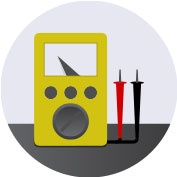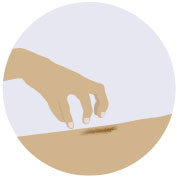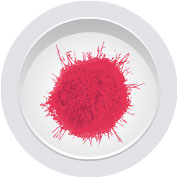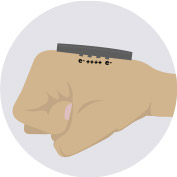Transdermal drug delivery of medication has advanced far beyond its most well known application, nicotine patches. Those patches were simple in design, and held very small lipophilic drugs that could easily and passively diffuse through the skin. This design limited the types of drugs that could be administered (1). It’s clear that there are benefits to transdermal drug delivery over the two most common types, oral and hypodermic delivery. They include avoiding degradation by bypassing the digestive system, increases in patient compliance by the ease of use of patch systems, and the ability to steadily release drug over a period of time and to change the amount released over a period of time(2).
There are also obvious advantages to eliminating the need for a nurse or doctor to administer a painful injection; these can be especially traumatic for children and the incoherent who cannot have it explained to them that “this is for your own good.” Transdermal drug delivery has evolved, and our drug delivery product takes two of these evolutions and hybridizes them.
The first evolution was to use a force to try to actively push drugs through the skin. A variety of methods have been used including chemical enhancers, ultrasound, jet injectors and iontophoresis. While this does allow for faster delivery and heavier doses, it doesn’t do much to expand the types of drugs that can make it through the stratum corneum. In the case of jet injection there is a major concern regarding transmission of pathogens. The second evolution is the advent of microneedle technology, which can pierce the stratum corneum, but without damaging the dermis, which is the first layer of the skin to contain pain nerves (1). By pairing both techniques it becomes possible to effectively deliver macromolecules (3), and open up the technology for use in vaccines, oligonucleotides, and biologics (1).
By taking our half-cell technology and punching microneedles into it we are able to create a patch that can deliver therapeutic macromolecules, ions and electrons simultaneously. By having the therapeutic molecules in intimate contact with free electrons they will benefit from their antioxidant nature and slow down oxidation during storage. In addition iontophoresis causes electolysis burning the skin (4) or decomposing the drugs making them lose their functionality or turn toxic. Since oxidation is slowed down in our product costs can be reduced by lowering the amount of drug needed. The rate of delivery of drugs can be modulated by changing the chemical composition of the half cell to create different potentials and by changing the construction of the needle parameters, within it’s critical ranges (5). While the delivery of drugs is the most exciting application, these patch’s can also be used over the counter for their nutritional ionic supplementation properties.
Our technology stands to revolutionize the treatment of many autoimmune diseases by combining many of the most effective treatment methodologies. For example, in the treatment of
rheumatoid arthritis the patch would be able to deliver electrons to decrease inflammation, magnesium to increase bone strength and in addition deliver the biologic medicine prescribed by the patient’s rheumatologist.







